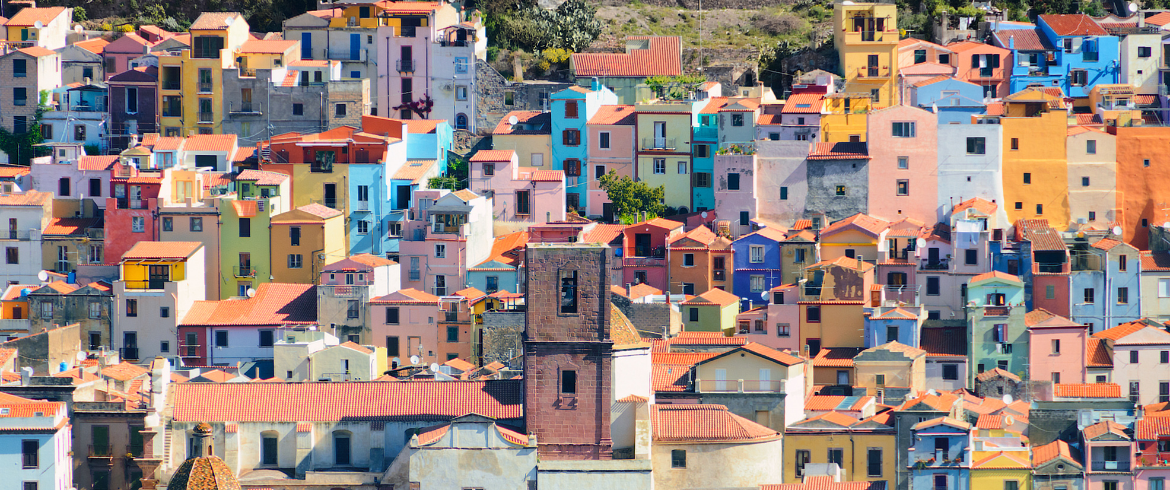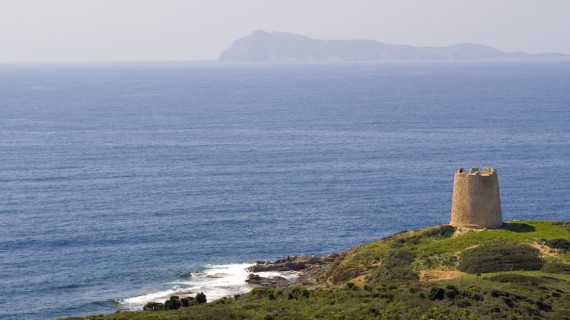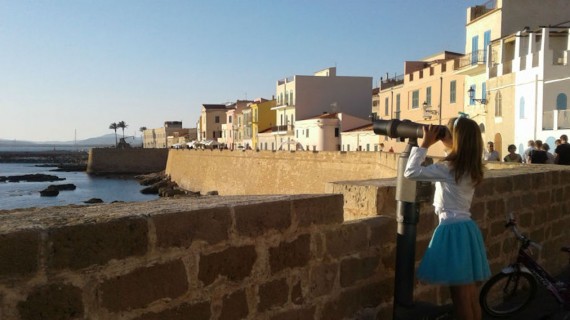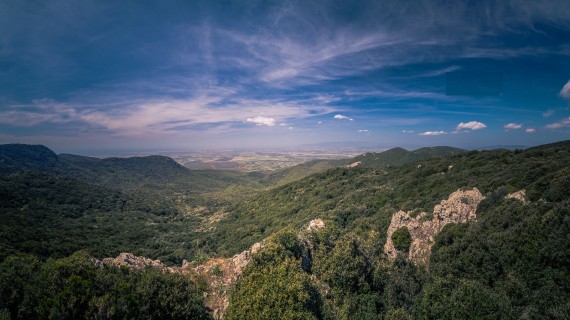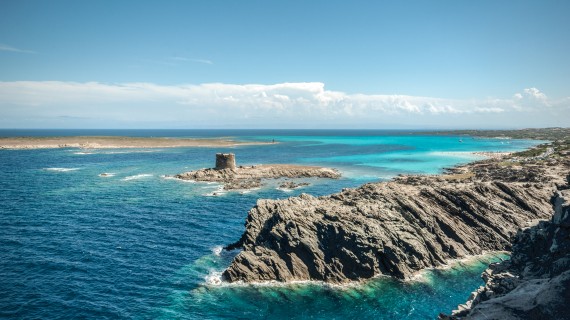After visiting Alghero and the Porto Conte Natural Park, in this second episode of our Sustainable Travel in Sardinia series, we venture from Alghero to Bosa. Our guide is Maria from Viaggiare Green, who accompanies us in discovering her territory, amidst breathtaking landscapes and authentic cultural treasures.
Are you ready to journey along the coast, toward the picturesque town of Bosa, where the past harmoniously merges with the present, creating a unique and unforgettable experience? Follow us!
Day 1: From Alghero to Bosa, a breathtaking route
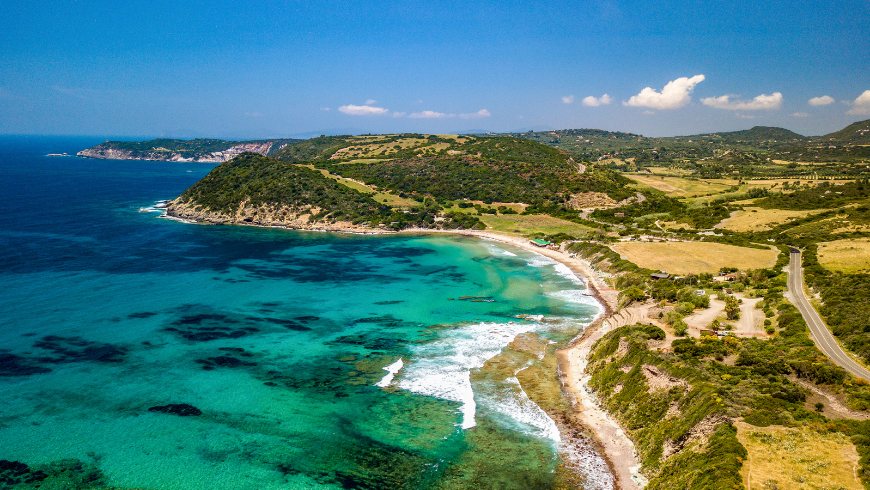
The 45 kilometers of coastline that connect Alghero to Bosa offer an unforgettable experience to anyone who travels it, whether by car, bus, bicycle, or e-bike. Along this coastal road, you are surrounded by views that seem to come straight out of a postcard, with the crystal-clear sea stretching to the horizon and the majestic limestone cliffs rising along the coast.
Cyclists and outdoor enthusiasts will find in this road a pleasant adventure, with the opportunity to explore the breathtaking landscapes slowly and contemplatively, enjoying every single detail along the way. Moreover, as Maria suggests in her guide, there is the possibility along the route to stop for a coffee break or to appreciate the spectacular view at one of the surfers’ favorite beaches: La Speranza (that means “the hope” in Italian).
To make your travel sustainable remember to bring with you a water bottle, in this way, you will avoid buying plastic bottles. To know where to refill your bottle, you can use the Fontanelle app, which allows you to easily find public fountains and refueling points of drinking water. In addition to giving detailed information on how to reach the fountains, the app also offers additional information such as the quality of the water, the fountain’s characteristics, and the comments of the other users.
Beach “Compoltitu”
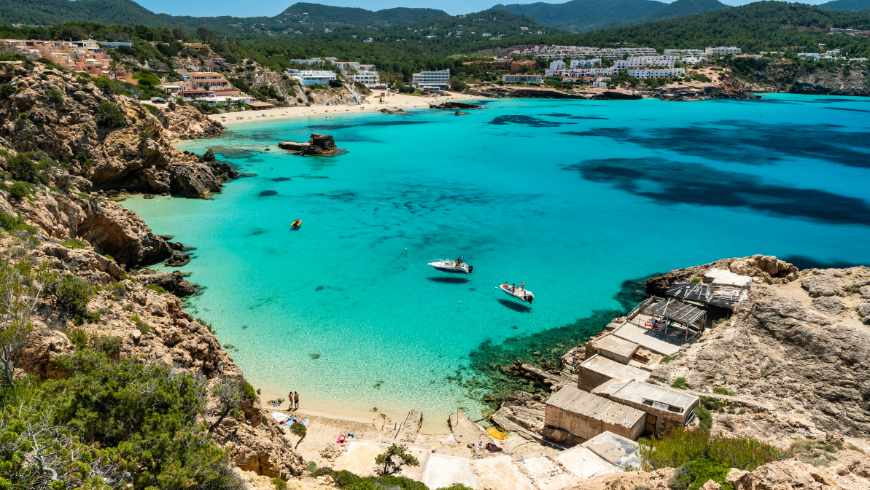
A stop along the road to Bosa is unavoidable. Maria, thanks to a hidden path, led us to one of the most amazing beaches of Sardinia: Beach Compoltitu.
We head off again, destination Bosa, to reach Villa Asfodeli, an Ecobnb in the heart of Tresnuraghes, Oristano.
Villa Asfodeli Tresnuraghes, a diffuse hotel
Villa Asfodeli is a diffuse hotel, that is a building that helps with the requalification of old villages and a little center that leaves artistic and cultural testimonies. This is an accommodation that provides a unique environmentally friendly experience full of relaxation and adventure.
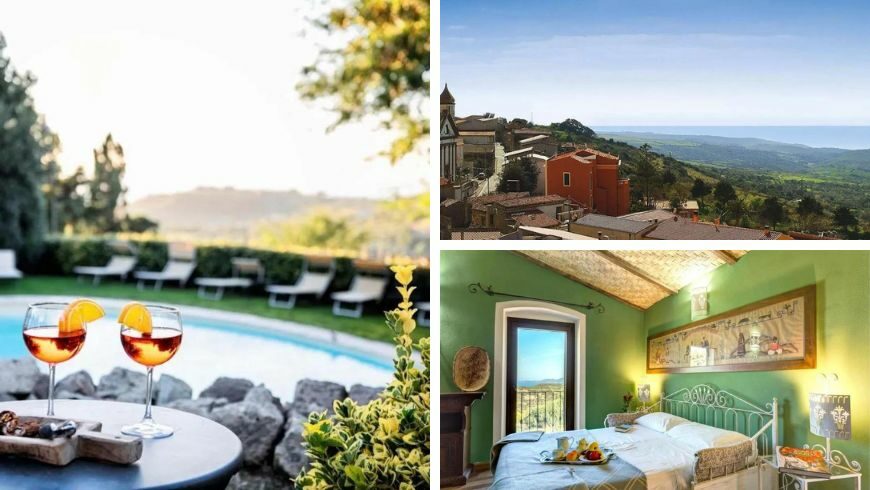
Modolo: among the Sardinian Hills
Right after sunset, we stop in another small Sardinian district, Modolo, just four kilometers away from Bosa. With less than 200 inhabitants, it keeps an intimate and authentic atmosphere. Its strategic position, between Bosa and Oristano, makes it a perfect starting point to explore the surrounding region.
The rich agricultural production, with the growing of cherry trees, olive groves, and vineyards, shows the importance of agriculture in the area and the quality of local products. It is interesting to note that Modolo is known especially for its wine production, with a particular emphasis on Malvasia‘s wine variety.
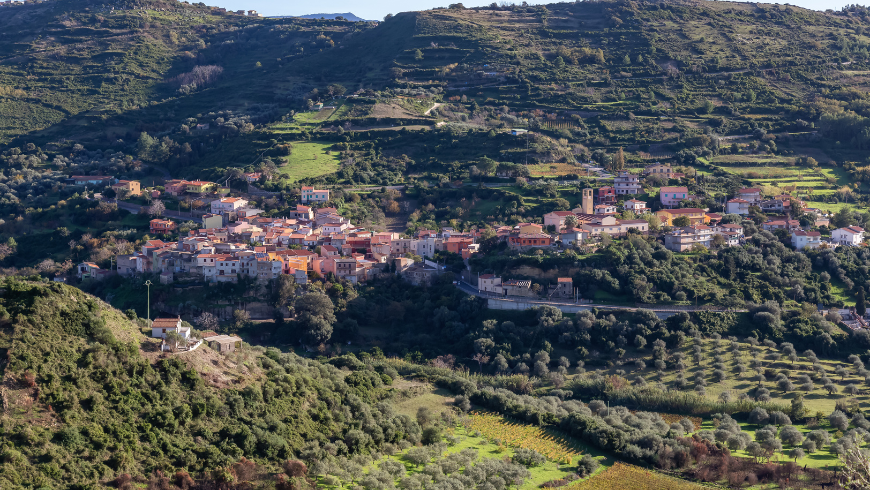
Day 2: Bosa and Bosa Marina
A new day full of adventures and amazing natural landscapes is starting! Now it’s time to visit Bosa!
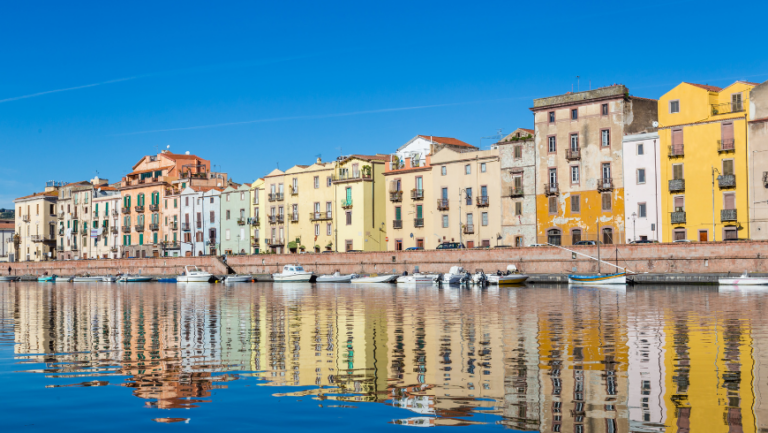
This is a picturesque town located on the north-west coast of Sardinia. It is known for its charming historical center, dominated by the majestic Castle of Malaspina which stands on a hill. Bosa enchants its visitors with its narrow paved streets, colorful houses, and authentic atmosphere.
The city preserves a medieval atmosphere, with its old churches, historical buildings, and small streets that invite you to walk and discover suggestive corners. The Temo River, which crosses the center of Bosa, adds additional charm to the landscape, offering the opportunity to do relaxing walks along its banks.
Among Bosa’s streets
Here we are on one of the main streets that cross the historical center of Bosa’s city: Corso Vittorio Emanuele II. This is a charming street, flanked by historical buildings with vibrant colors and ornate facades that date back to different historical periods. Along this street, the buildings show a fascinating mix of medieval, gothic, baroque, and neoclassic architecture, evidence of the rich history of the city.
Moreover, Corso Vittorio Emanuele II is also the headquarters of one of the main monuments of Bosa, among which figures Museo Casa Deriu. This museum is hosted in a historical house of the 19. century and offers visitors the opportunity to delve into the history, art, and culture of the area. It exhibits a wide collection of archeological finds, works of art, and traditional artifacts, giving a complete overview of the history and daily life in Bosa and nearby,
Quartiere (“neighborhood”) Sa Costa
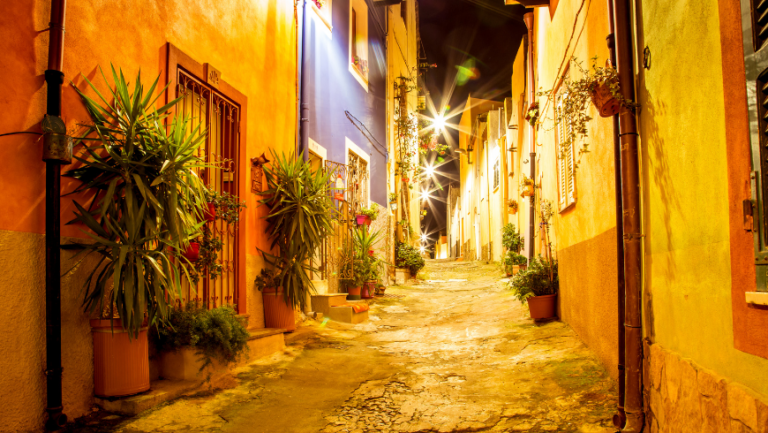
By walking through the historical center of Bosa, you arrive in the Quartiere San Costa, one of the most charming and characteristic areas of the city, known for its narrow paved streets, its historical buildings with vibrant colors, and the authentic atmosphere that recalls the charm of the old Sardinian city.
The townhouses of Sa Costa date back to different historical periods and present a fascinating mix of architectonic stiles. The facades of the buildings are often decorated with terraces in wrought iron and colorful planters. Walking through the streets of Sa Costa is a wonderful experience, that allows the visitors to delve into the daily life of the city and to discover the quiet and picturesque corners.
A magical adventure in Bosa Marina
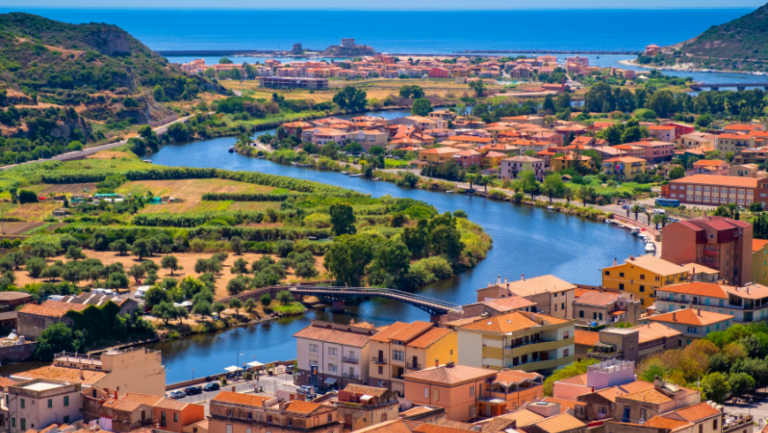
How to say no to an adventure directly in the Temo River in Bosa Marina? Maria takes us with her.
This is an emotional experience that allows you to explore the natural beauty of the area through activities such as canyoning, kayaking, and rafting. The Temo River is the only navigable river in Sardinia and offers a breathtaking landscape with its crystal-clear waters that meander through a picturesque valley surrounded by hills and lush vegetation.

Day 3: Museo delle Conce, Flussio and Tinnura
The last day in Bosa gives us the opportunity to delve into the amazing city’s historical center, guided by Maria towards one of its cultural gems: Museo delle Conce.
The Museo delle Conce is a must-see stop for whoever wants to deepen the history and culture of Bosa and of Sardinia. It was created to promote and preserve the history of leather tanning, an activity that had a primary role in Bosa’s economy throughout the nineteenth century, until 1962, the year of the closure of the last tannery. The tanneries of Bosa consisted of a series of buildings made with local stones and plastered with a mixture of limestone and trachyte stone. Today, many of these historical buildings have been reconverted into commercial activities and homes, contributing to characterize the aspect of Bosa near Ponte Vecchio.
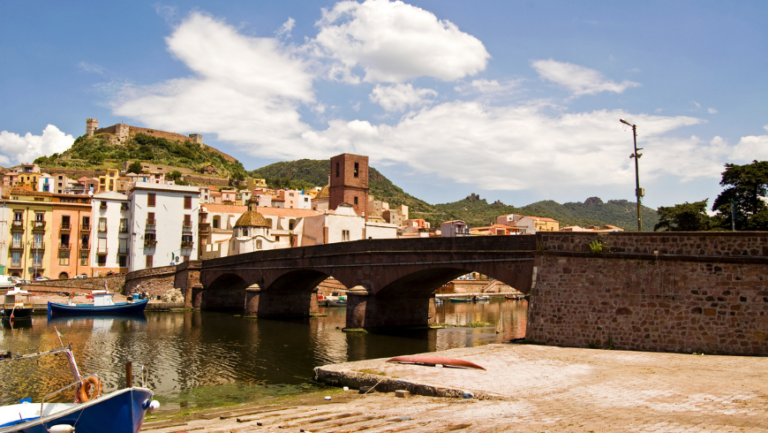
Flussio and Tinnura
Flussio, an amazing village located in the central-western region of Sardinia, is known for its natural beauty, its rich historical heritage, and for the artisan tradition. Surrounded by vineyards, olive groves, and forests of oak, Flussio is well-known for wine production and high-quality olive oil. In its charming historical center the local artisans weave hand-woven baskets, true symbols of the Sardinian identity and culture. Flussio represents an oasis of authenticity, where history, nature, and tradition blend together harmoniously, giving to visitors an unforgettable experience in the Sardinian land.
From Flussio, we head towards Tinnura, a picturesque village known for its murals that decorate the houses’ facades, transforming the village into a real outdoor art gallery. Each mural tells a different story, reflecting the culture, history, and traditions of Sardinia.
Last Stop: Porto Alabe and Torre Columbargia
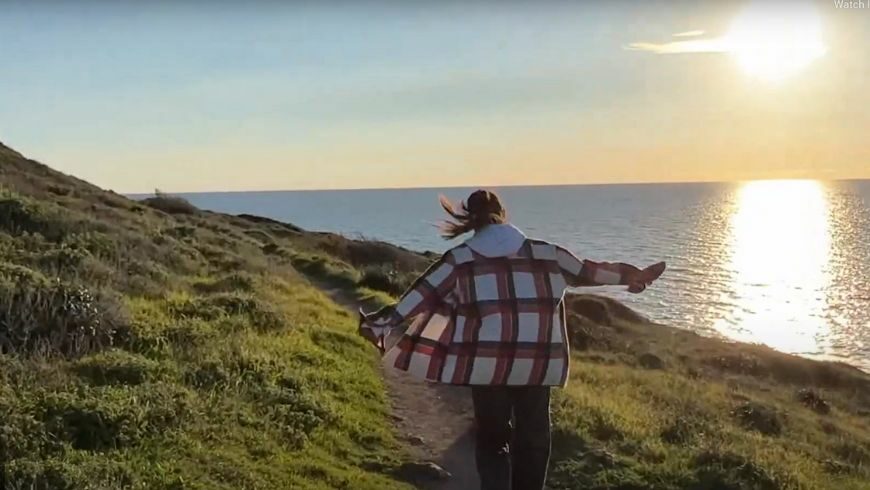
The last stop of our travel leads us to explore the beauties of Porto Alabe and Torre Columbargia. The former is a peaceful seaside resort characterized by an amazing golden sand beach bathed by crystal-clear waters, ideal to unwind and enjoy the sea. Here, the visitors can practice a variety of water activities to explore the rich marine life of the area.
From the beach of Porto Alabe, we head towards Torre Columbargia, a coastal tower dating back to the sixteenth century that stands on a panoramic cliff with a breathtaking view of the Mediterranean Sea. This tower used to be part of the coastal defensive system of the island and it represents today an important historical site and a picturesque tourist attraction. The visitors can walk around the tower and admire its impressive charm, while they enjoy the natural beauty that surrounds the tower.
Finally, our adventure through Sardinia took us to the discovery of gems that we did not expect, breathtaking landscapes, and a culture rich in history and traditions. From Alghero to Bosa, from Flussio to Porto Alabe, we explored unique and authentic places that left a mark on our hearts.
